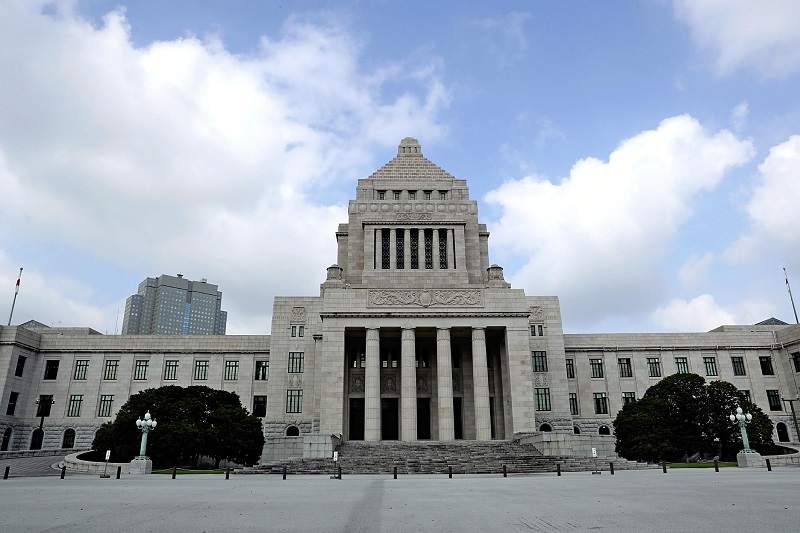
The Diet Building in Chiyoda Ward, Tokyo, Japan.
16:59 JST, May 24, 2023
The government plans to issue special public bonds as a revenue source for implementing its planned “extraordinary level of measures to address the declining birth rate” from fiscal 2024, government sources said.
A type of government bond, tentatively called a “special public bond for children,” is expected to be issued over a period of about two years.
The government also plans to set up a new funding system designed to support child-rearing households by raising social insurance premiums.
The plans will be incorporated into the Basic Policy on Economic and Fiscal Management and Reform, which is expected to be adopted by the Cabinet in June.
Designating three years beginning in fiscal 2024 as a period to accelerate efforts to address the low birthrate, the government will gradually increase the budget for the measures in phases. The amount is expected to increase by about ¥3 trillion from the current figure as early as fiscal 2027.
However, it is likely only in fiscal 2026 that the government will be able to secure a sufficient amount of revenue sources. It plans to make up for shortfalls in the meantime by issuing the special public bonds.
The envisaged special public bonds for children are expected to be so-called bridge bonds, which will be redeemed with revenues secured through increases in social security premiums in the future. The government plans to set up a new special account, tentatively called the “children’s safe,” which will centralize and manage the budget related to children. The special public bonds will also be issued and managed under the special account.
In its measures from fiscal 2027 onward, the government plans to spend a total of ¥3 trillion focusing on three key fields.
Specifically, the government plans to allocate about ¥1.5 trillion for strengthening financial assistance by increasing the allowance for families with children, scrapping medical fees for children and reducing the financial burdens of educational fees.
About ¥800 billion to ¥900 billion will be spent to expand services for child-rearing households, such as establishing a new nursery system.
The government also plans to allocate about ¥700 billion to boost support for families in which both parents work, including an increase in their take-home income during child-care leave.
As revenue sources, the government plans to secure ¥900 billion to ¥1 trillion through the envisaged funding system, ¥1.1 trillion to ¥1.2 trillion by thoroughly reviewing expenditures, and ¥900 billion by making use of the budget that has already been set aside.
The government plans to reach a conclusion on whether to increase social insurance premiums by the end of this year. It will also consider measures to reduce burdens on employees of small- and medium-size companies.
"Politics" POPULAR ARTICLE
-

Japan to Support Central Asian Logistics Route That Bypasses Russia, Plan to Be Part of Upcoming Summit in Tokyo
-

Japan to Tighten Screening of Foreigners’ Residential Status by Providing Information of Nonpayment of Taxes
-

Chinese, Russian Bombers Flew Unusual Path by Heading Toward Tokyo; Move Likely Meant to Intimidate Japan
-

Japan Plans National Database to Track Foreign Ownership of Real Estate, Land as It Weighs New Rules
-

Up to 199,000 Deaths Estimated From Mega-Tsunami; Most Recent Occurrence Took Place in 17th Century
JN ACCESS RANKING
-

Tokyo Economic Security Forum to Hold Inaugural Meeting Amid Tense Global Environment
-

Keidanren Chairman Yoshinobu Tsutsui Visits Kashiwazaki-Kariwa Nuclear Power Plant; Inspects New Emergency Safety System
-

Imports of Rare Earths from China Facing Delays, May Be Caused by Deterioration of Japan-China Relations
-

University of Tokyo Professor Discusses Japanese Economic Security in Interview Ahead of Forum
-

Japan Pulls out of Vietnam Nuclear Project, Complicating Hanoi’s Power Plans























